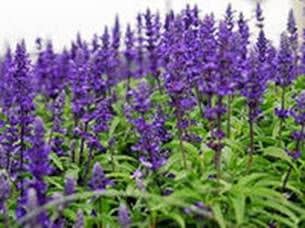
Salvia sage, nutmeg – a two-year herbaceous plant with a labiate family. Has a nutmeg. Leaves are ovate, serrate, doubly dentate. Corolla pale – blue or bluish – pink. Pestils are pink, webbed. Rings 4 – 6 – flowered, collected in interrupted brushes.
Cultivate the plant in the Crimea and Zaporizhzhya region on an area of 3 thousand hectares.
Salvia sowing is a good honey plant. Bees willingly visit her flowers, collecting nectar and pollen. Under favorable weather conditions, the bee family brings 3-4 kg and more honey per day. Blossoms sage in June – July.
One flower excretes 0.390-0.450 mg of sugar in nectar, honey production of 1 ha is 180-239 kg.
Sage honey of light amber color, with a very pleasant taste and a delicate aroma. Of the simple sugars in it, most of all glucose. It crystallizes under normal storage conditions after 3-4 months. after pumping out. Crystallization is mostly fine-grained.
Bees willingly collect pollen from the flowers of sage. One flower excretes 0.56-0.67 mg of pollen.
Содержание пчел на чердаке. Термокамера для пчел своими руками.
Медоносы